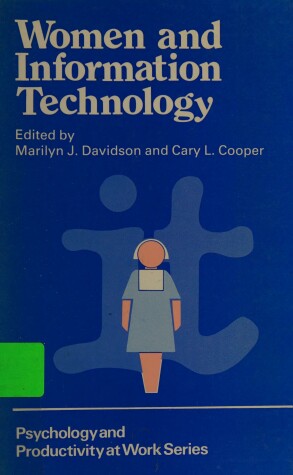Psychology and Productivity at Work
1 total work
Women and Information Technology
by Marilyn J. Davidson and Cary L. Cooper
Published 28 October 1987
Today, over 40 per cent of the British and American workforce are women and throughout the rest of western Europe women make up between a quarter and a third of the workforce. Furthermore, the occupations and industries in which women workers are concentrated are areas which are increasingly becoming affected by the introduction of technology, especially new information technology. The aim of this book is to present a comprehensive overview of the impact of new information technology on women in terms of both employment as well as human and organizational issues - present and future. The book is divided into four main sections. The first section presents a cross-cultural perspective of the effects of information technology on girls and women. The second section concentrates on how new information technology has affected women working in different industries in the United Kingdom.
The third section provides chapters investigating the psychosocial and health effects of information technology on women workers, and finally, the fourth section looks at the future new trends and initiatives relating to women and information technology, which includes homeworkers, union involvement and new training initiatives. Because of its broad coverage of information technologies and its focus on policy and health, the book will be of great value to a wide range of professionals - psychologists, both practitioners and students; personnel and occupational management, information technology specialists and womens organizations.
The third section provides chapters investigating the psychosocial and health effects of information technology on women workers, and finally, the fourth section looks at the future new trends and initiatives relating to women and information technology, which includes homeworkers, union involvement and new training initiatives. Because of its broad coverage of information technologies and its focus on policy and health, the book will be of great value to a wide range of professionals - psychologists, both practitioners and students; personnel and occupational management, information technology specialists and womens organizations.
